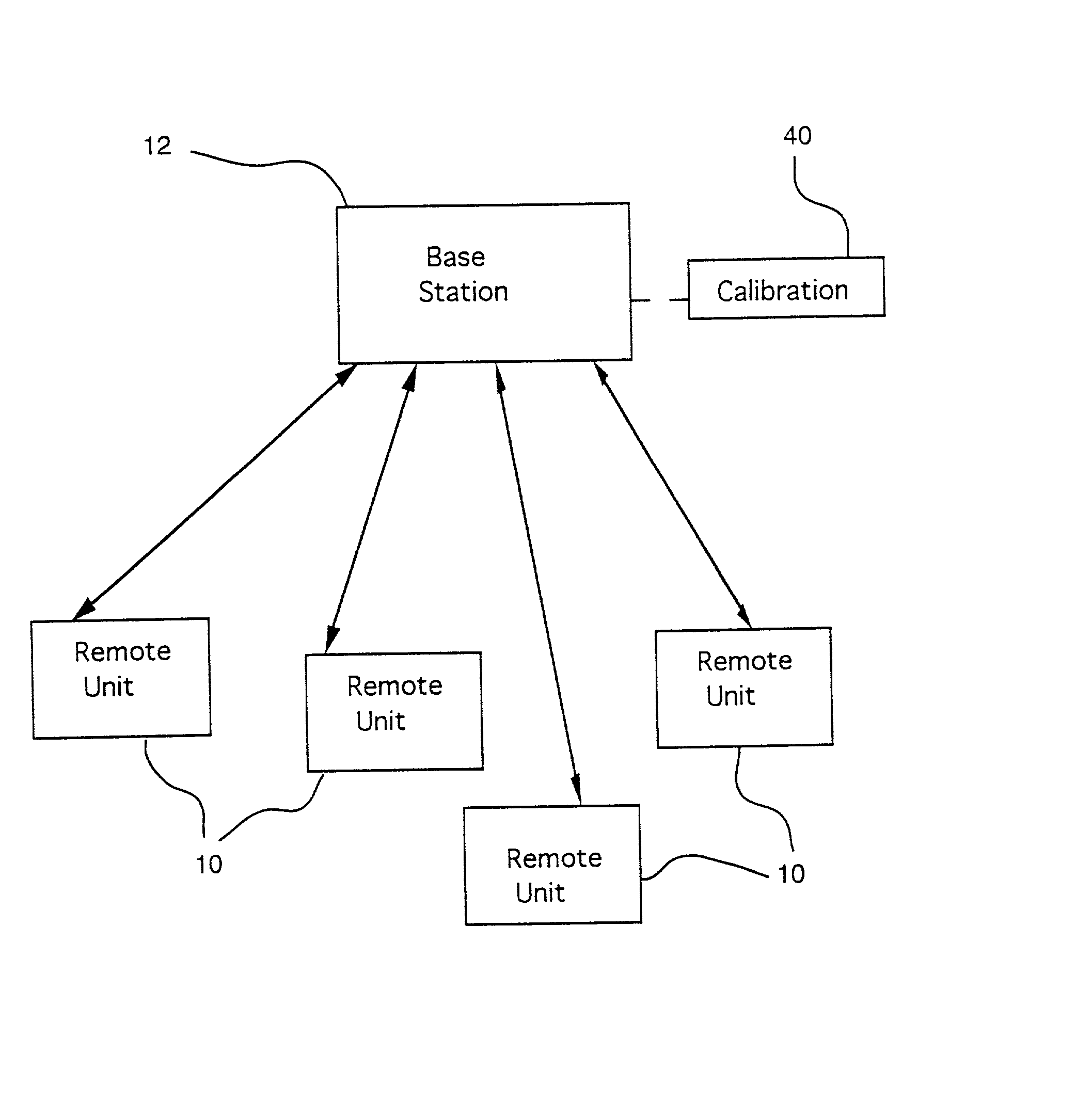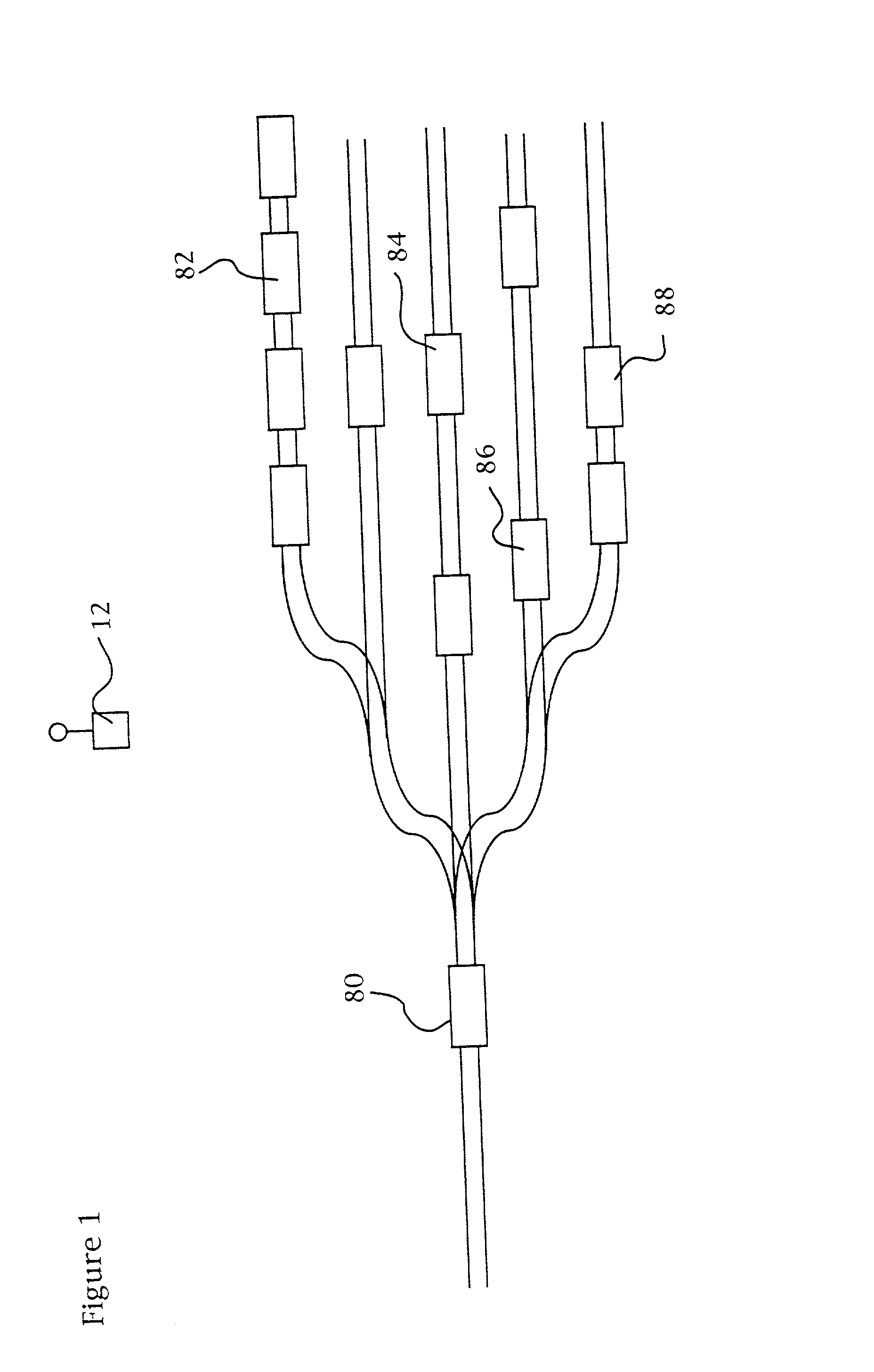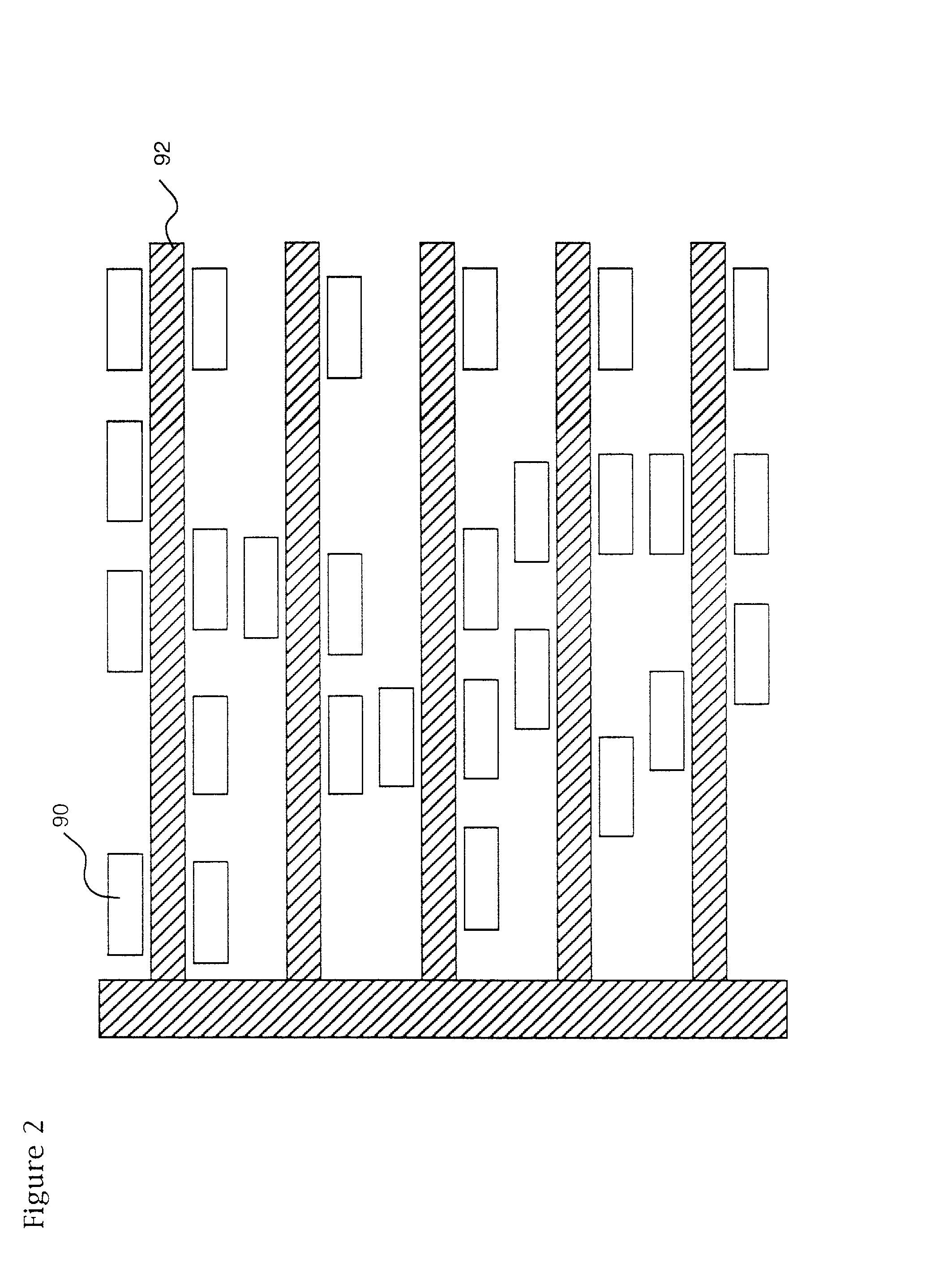System and method for determining freight container locations
a technology for determining inventory, applied in the field of system and method for tracking inventory and freight, can solve the problems of inability to accurately determine the location of freight containers
- Summary
- Abstract
- Description
- Claims
- Application Information
AI Technical Summary
Problems solved by technology
Method used
Image
Examples
second embodiment
[0040] SECOND EMBODIMENT
[0041] The embodiment illustrated in FIG. 6 is useful to illustrate several alternatives that may be incorporated into the first embodiment illustrated in FIG. 3. The GPS "engine" is eliminated in the remote units 10. Rather, each remote unit 10 comprises a GPS repeater, such as a Tidget GPS sensor made by Navsys Corp. of Edinburgh, Scotland. The repeater 50 operates to receive the GPS raw data timing signals from the GPS satellites, digitize and compress the timing signals. Preferably, the repeater 50 can be set to look at a certain number of satellites, e.g. 5 satellites. The satellite timing signals are not processed. Instead, the signals are amplified and periodically relayed to the base station 12 via the radio interface 20.
[0042] In FIG. 6, the remote unit 10 includes a separate timer 52 and motion detector 54 for initiating operation. That is, the timer 52 can be set to initiate operation of the remote unit 10 at preset times. Additionally, or alternat...
third embodiment
[0047] THIRD EMBODIMENT
[0048] FIG. 7 illustrates a number of freight containers 70 inside of a warehouse building 72. Remote units 10 in accordance with the first or second embodiments, FIGS. 3 and 6, are attached to the freight containers 70. Because the freight containers are inside of a building 72, reception of GPS signals from the satellite constellation is not normally possible. Therefore, pseudolites 74,75 are employed within the building 72 and operate like conventional GPS satellites. Each pseudolite includes an antenna 76 to receive GPS time from the GPS satellites. This eliminates the necessity for an atomic clock in the pseudolites 74 (with a concomitant reduction in cost).
[0049] While two pseudolites 74,75 are sufficient to give accurate 3D position to the remote receivers 10, the system of FIG. 7 preferably uses three pseudolites. The elevation of the warehouse floor is known and freight containers may be positioned on the floor which simplifies position calculations. ...
fourth embodiment
[0050] FOURTH EMBODIMENT
[0051] As an alternative to conventional pseudolites, the pseudolites 74,75 in FIG. 7 may be replaced with relays 74,75 to rebroadcast GPS timing signals from the GPS constellation. Consider a GPS satellite S1 and a specific freight container 71 in the warehouse 72. The total time for the GPS signal to reach container 71 is the time t1 from the satellite S1 to relay 74 plus the time t2 from relay 74 to the container 71 plus the rebroadcast delay d. The rebroadcast delay can be made very accurate by updating a clock in the relay 74 with the accurate GPS time from the satellite.
Ttotal=(t1+t2+d)
[0052] The method for determining the position of the container 71 from the relay 74 can take several forms. In one form, the total time is used from satellite S1 to container 71 minus the delay d to determine a distance from the satellite S1 to container 71. This ignores the angular relationship between container 71 and relay 74. With the distance from container 71 to sa...
PUM
 Login to View More
Login to View More Abstract
Description
Claims
Application Information
 Login to View More
Login to View More - R&D
- Intellectual Property
- Life Sciences
- Materials
- Tech Scout
- Unparalleled Data Quality
- Higher Quality Content
- 60% Fewer Hallucinations
Browse by: Latest US Patents, China's latest patents, Technical Efficacy Thesaurus, Application Domain, Technology Topic, Popular Technical Reports.
© 2025 PatSnap. All rights reserved.Legal|Privacy policy|Modern Slavery Act Transparency Statement|Sitemap|About US| Contact US: help@patsnap.com



